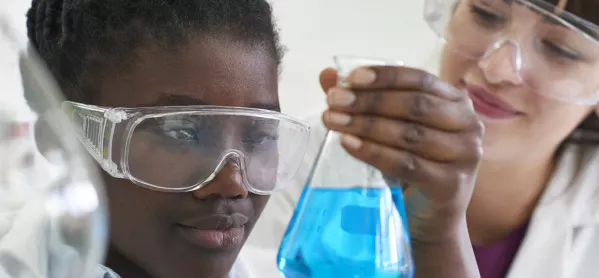Girls have overtaken boys in entries for science A levels for the first time ever.
New figures published on A-level results day show that, across the UK, females accounted for 84,111 entries in biology, chemistry and physics this year (50.3 per cent) and males for 83,133 (49.7 per cent).
A-level results: A* grades at six-year low
Gender gap: Girls overtake boys in gaining top grades
Advice: How to help disappointed students
In 2018, girls accounted for 49.6 per cent of entries in these three subjects and boys for 50.4 per cent.
This year, girls represented the majority of entries in biology (62.9 per cent) and chemistry (53.7 per cent), but continued to lag behind boys in physics, accounting for just 22.6 per cent of entries.
They were able to overhaul boys in overall science entries because of a bigger proportional increase in female entries for chemistry and physics.
Science A-level entries on the up
Increasing the uptake of science subjects among girls has been a priority for policymakers in recent years. Earlier this year, schools minister Nick Gibb called for politicians, teachers and parents to try to change the attitudes of female school pupils towards science.
Increasing the overall number of pupils studying sciences has also been a key priority for the government, and today’s results suggest that focus is bearing fruit.
In 2019, entries in biology, chemistry and physics represented 20.9 per cent of all A-level entries - the first time the sciences have accounted for more than a fifth of all entries.
Entries for science, technology and maths also rose. Subjects classed as Stem (biology, chemistry, physics, design and technology, maths, further maths, computing and “other sciences”) accounted for 37.6 per cent of all A-level entries, up from 36.2 per cent in 2018.
With subject cohorts increasing, attainment at the top end dropped in the sciences. In biology, 7 per cent of all entries were at A* (7.6 per cent in 2018), in chemistry 7.6 per were at A* (8.4 per cent in 2018) and in physics 8.7 per cent were at A* (9.4 per cent in 2018).




